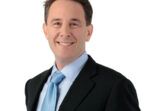Prakash said BMO is not putting funds together, but portfolio strategies that are actually implemented by the intermediaries.
“The implementation happens with respect to the intermediary using their platform and clients benefit from the asset allocation decision. We would work with intermediaries so they are able to offer this to their client base.”
ETFs have low penetration in Asia relative to Europe and the US for various reasons. In particular, the advisory business is still commission-based (as opposed to fee-based), and therefore advisors have less incentive to use the cheaper ETFs.
However, Prakash said the portfolio strategies are offered as a discretionary service.
“Therefore the distributor or intermediary would be able to add a discretionary fee.”
Matching risk profile
There are more than 5000 ETFs across global markets. He believes BMO AM is in a position to help intermediaries review and buy ETFs for appropriate exposure across risk profiles, geographies and currencies.
“The strategy actually combines different ETFs and therefore takes the asset allocation decision, which is difficult for an individual to do.”
He said the ETF portfolio solutions range across five risk levels, from an ETF portfolio with lower expected risk and return using diversified fixed income holdings to one with a higher component of equities and fewer bonds.
“Each of these strategies also will deviate tactically from the benchmark to take advantage of any dislocations in the market.
“We’re completely aware education and support is required. Particularly since we use the vague word `solutions’ as opposed to selling individual ETFs.”
The first portfolio strategy has been running internally in a private bank for the last six weeks and has shown satisfactory results, he said, adding that the firm is in talks with external parties.
ETF awareness improving
Last November, BMO launched three Hong Kong-domiciled ETFs, which have since gained traction. Although it is early days, Prakash said so far “they have moved in lockstep with internal expectations” (see chart).
The two equity products are the Hong Kong Banks ETF, which invests in Hong Kong-listed bank stocks and the Asia High Dividend ETF, which aims to track the NASDAQ Asia ex-Japan Dividend Achievers Index.
The other is a bond product, the Asia USD Investment Grade Bond ETF, which offers US dollar-based bond exposure.

Some institutions have been investors in the products, while others have decided to wait until the vehicles reach a certain level of AUM, he said.
“Smaller or intermediate investors are the first group that has been buying.
“The retail story is involves a fair dosage of awareness and education because these investors are actually starting in some ways from ground zero.”
BMO intends to launch more ETFs in Hong Kong and Singapore and in Asia. He declined to give further details because the firm is working through the regulatory process.
“Traditionally, ETFs have been a tough sell,” Prakash said. “The intermediation [commission-based] model has been a difficult hurdle. That’s beginning to change.”
He also believes investor awareness of ETFs has improved markedly, citing a recent survey done by the Hong Kong Stock Exchange that shows the participation rate rising to 30% from 20% over a 12-month period.
In 2014, ETFs accounted for HK$1.17trn ($150bn) or 95% of the total annual turnover of combined ETFs and REITs listed on the Hong Kong Stock Exchange, up 25% from the previous year, according to the exchange figures.
















